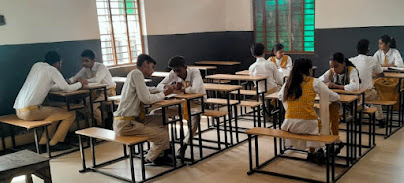To develop the skills to solve competency-based questions in CBSE Board exams, you need to focus on understanding the concepts deeply, improving critical thinking, and practicing effectively. Here are some strategies to help you excel in competency-based questions:
Understand the Syllabus: Familiarize yourself with the CBSE Board syllabus and the competency-based framework. Understand the learning outcomes and competencies expected from each subject and topic.
Master the Concepts: Focus on understanding the fundamental concepts of each subject. Avoid rote learning and instead, strive to understand the underlying principles. This will help you apply your knowledge to various situations and questions
Practice Regularly: Practice is key to success. Solve a variety of competency-based questions regularly. You can find sample papers, previous year question papers, and practice books designed for CBSE Board exams. This will help you get accustomed to the exam pattern and style of questions.
Analyze Past Papers: Analyze previous year question papers to identify patterns, frequently asked topics, and the types of competency-based questions. Understanding the exam's past trends will give you insights into the examiners' expectations.
Develop Critical Thinking: Competency-based questions often require you to think critically, analyze situations, and apply your knowledge to real-life scenarios. Practice critical thinking exercises and engage in discussions or debates to enhance your analytical skills.
Time Management: Work on your time management skills to ensure you can effectively complete the exam within the given time frame. Practice answering questions under timed conditions to improve your speed and accuracy.
Seek Help: If you face any difficulties in understanding concepts or answering competency-based questions, don't hesitate to seek help from your teachers, peers, or online resources.
Use Mind Mapping and Visualization Techniques: Mind mapping and visualization can help you organize your thoughts and understand complex concepts better. Create diagrams, charts, or mind maps to link various topics and concepts together visually.
Stay Updated: Keep yourself updated with the latest developments in your subjects. Follow relevant news, articles, or research that can provide real-life examples related to the concepts you are studying.
Stay Positive and Stay Healthy: Maintain a positive attitude towards learning and exams. Take care of your physical and mental well-being to stay focused and productive during your preparation.
Remember, competency-based questions assess your ability to apply knowledge and skills to real-life situations, so understanding the concepts deeply and practicing diverse scenarios is crucial for success in CBSE Board exams.
Analyze Past Papers: Analyze previous year question papers to identify patterns, frequently asked topics, and the types of competency-based questions. Understanding the exam's past trends will give you insights into the examiners' expectations.
Develop Critical Thinking: Competency-based questions often require you to think critically, analyze situations, and apply your knowledge to real-life scenarios. Practice critical thinking exercises and engage in discussions or debates to enhance your analytical skills.
Time Management: Work on your time management skills to ensure you can effectively complete the exam within the given time frame. Practice answering questions under timed conditions to improve your speed and accuracy.
Seek Help: If you face any difficulties in understanding concepts or answering competency-based questions, don't hesitate to seek help from your teachers, peers, or online resources.
Use Mind Mapping and Visualization Techniques: Mind mapping and visualization can help you organize your thoughts and understand complex concepts better. Create diagrams, charts, or mind maps to link various topics and concepts together visually.
Stay Positive and Stay Healthy: Maintain a positive attitude towards learning and exams. Take care of your physical and mental well-being to stay focused and productive during your preparation.
Remember, competency-based questions assess your ability to apply knowledge and skills to real-life situations, so understanding the concepts deeply and practicing diverse scenarios is crucial for success in CBSE Board exams.
sample Question paper 2024 Download Now


Competency-based questions assess your ability to apply knowledge and skills to real-life situations, so understanding the concepts deeply and practicing diverse scenarios is crucial for success in CBSE Board exams.
ReplyDelete